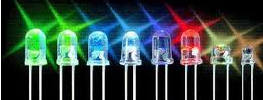Introduction
All organisations would love the luxury of altruistically doing the right thing for the environment. Sadly for most, competition and fiscal goals has traditionally made this a tough challenge. Nowadays, it’s easier for organisations to be both energy efficient and save costs – doing their bit for the environment.
So, we’ve put together a comprehensive list of fiscally prudent tips, offering energy saving lighting advice that can save REAL money. Some organisations already adopt many of these tips. There are a few who adopt most (if not all). For most, that means there’s so much more that can be done
We hope you find these key energy saving lighting tips useful (and look forward to your feedback):
1. Tired Lighting Costs Money
Ensure all lighting is within its quoted operating life. While old fluorescent lights may still work, you are paying a premium for lighting with diminished output.
2. Consider Switching to LED Lighting
New Light-Emitting Diode (LED) technology often requires fewer fixtures and/or fewer lamps for the same illumination. It uses a fraction of the wattage and lasts longer than compact fluorescent lamp (CFL), or other technologies (50x longer than incandescent lighting).
Upgrade old fluorescent fittings and tungsten lighting to energy efficient, long life LED lamps. Check out the recent Telegraph report (here) on the savings. You’ll be pleasantly surprised when you do the numbers on replacing old technology!
There are indoor and outdoor signage that needs to be always on, e.g. Exit Signs. It’s important to replace incandescent/fluorescent “EXIT” signs with LED signs.
For help calculating ROI and Pay-back, consult an expert (better still, talk to us)
3. Use the Technology
The great thing about lighting controls and related technology is that it can save you masses of money. It allows you to appropriately illuminate as necessary. Investing in this technology should easily give you a pay-back within 3-5 years. According to the Carbon Trust, savings can be >40%. In brief:
- if no one is present, dim or switch off lights
- integrate with ambient light sensors – e.g. put your toilet and stockroom lights on timer switches or personnel sensors
- ensure all areas (particularly with >1kw lighting load) have controlled lighting
- regularly check time clock settings are in line with requirements – up grade any time controls that can’t offer the flexibility to suit your business and savings requirements
- regularly re-commission control systems to make sure they are effective for your requirements
- take advantage of natural daylight: turn off or dim electric lighting when adequate sunlight is available to illuminate interior space
- ensure outdoor lighting is off during daytime
4. There are LEDs and LEDs
Not all LEDs are made equal – some are more equal than others (poetically twisting the old saying).
Consider lifetime costs on all new energy saving lighting projects. In particular, make sure that you have done the calculations on the various Mean Time Between Failures (MTBF) against costs. Don’t go for low capital cost at the expense of a life time of suffering from high energy and maintenance costs
Wrong decisions WILL cost you time and money.
5. Appropriate Lighting For The Activity
Let’s take a simple sports hall as an example. Cricket needs better lighting than football. Typically, lighting is at the same intensity for all, which usually means the highest setting – and that’s just a waste!
Check out the European Standard covering minimum sports lighting EN2193:2007
6. Keep It Simple
Complex lighting controls required trained personnel who have to be in attendance (avoid human error). Make sure any lighting project, no matter how small, has simplicity of use.
7. Meter Readings
Regularly check utility meter readings to spot adverse trends.
More and more organisations are adopting smart meters. These are invaluable in monitoring usage and trends, so you can better control your costs.
Larger sites that have Half Hour metering agreements need to watch out for excess charges.
Don’t forget to verify the bills when they arrive!
8. Staff Awareness
Most staff switch every light (and other equipment) on when they arrive without thinking about requirements. Labelling switches and sockets encourages staff to read the labels a switch on only what is necessary.
Additional Cost Saving Considerations
Appoint ‘Energy Champions’
These are members of staff who turn off lights, equipment, etc., when not in use. Better still run an energy saving lighting campaign with all staff. Even better, incent staff in energy savings and enable them to make suggestions.
Quantify and Measure
When you talk with lighting suppliers, get them to quantify savings. You can even get them to supply energy saving guarantees.
Remember
It’s not just about the Lumens, but also where the Lumens are delivered!
LED lighting has different characteristics to other lighting. It is important to understand how lighting is delivered, to make best use of this technology.
And, a final thought……..
The old adage of leaving well alone, something that is not broken, no longer holds water in the current drive for energy and cost efficiencies.
It costs nothing to check out your lighting systems. Actually, when your people, your business and your finance department see the results, they will be so pleased that you did.
Bonus Tip: Speak to Chalmor, we can help!
Contact us at: https://www.chalmor.co.uk/contact/
Email: info@chalmor.co.uk

